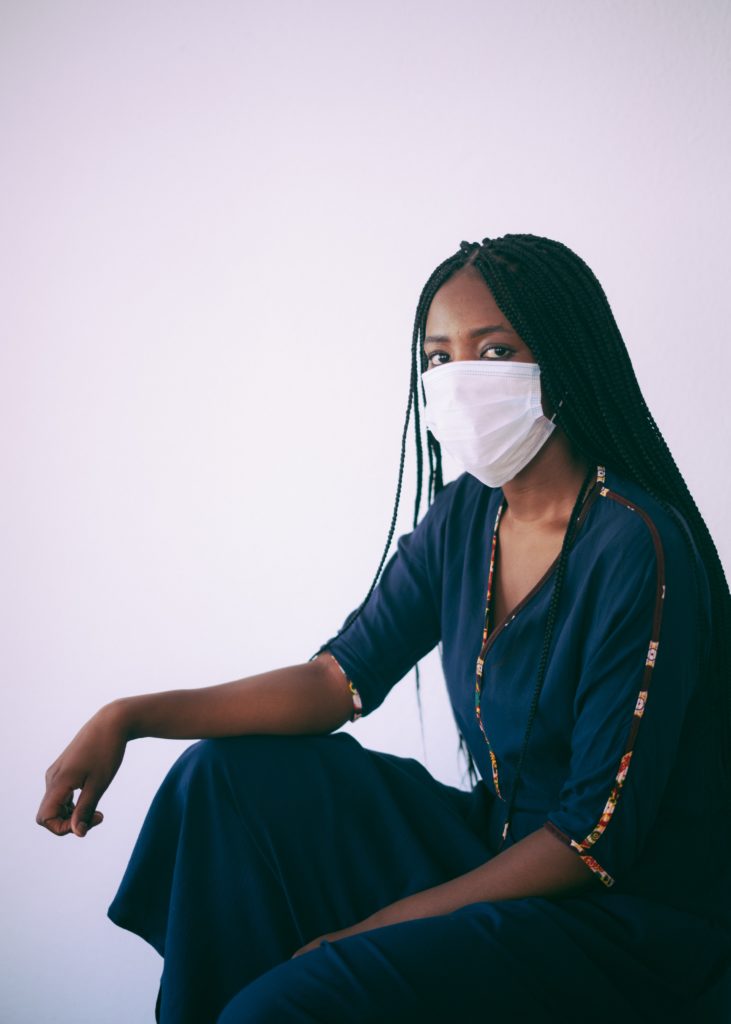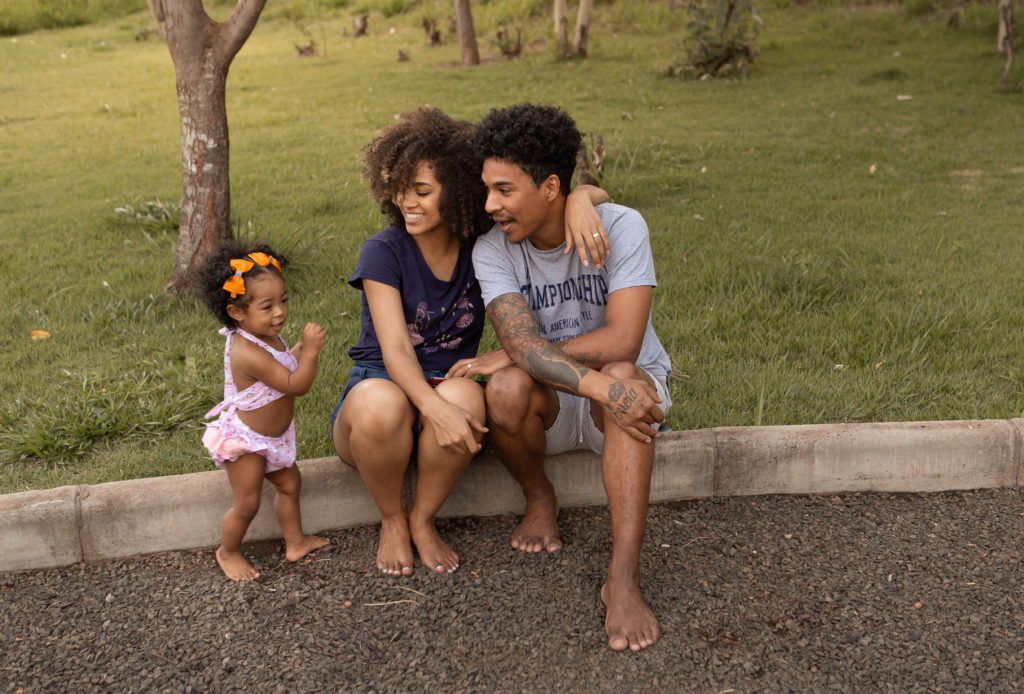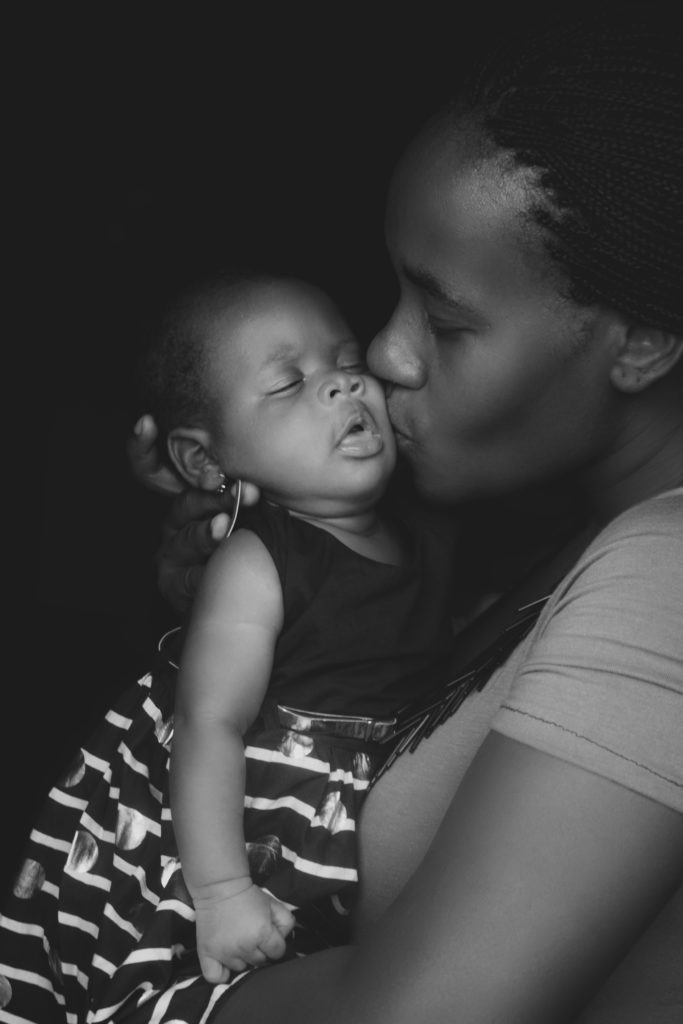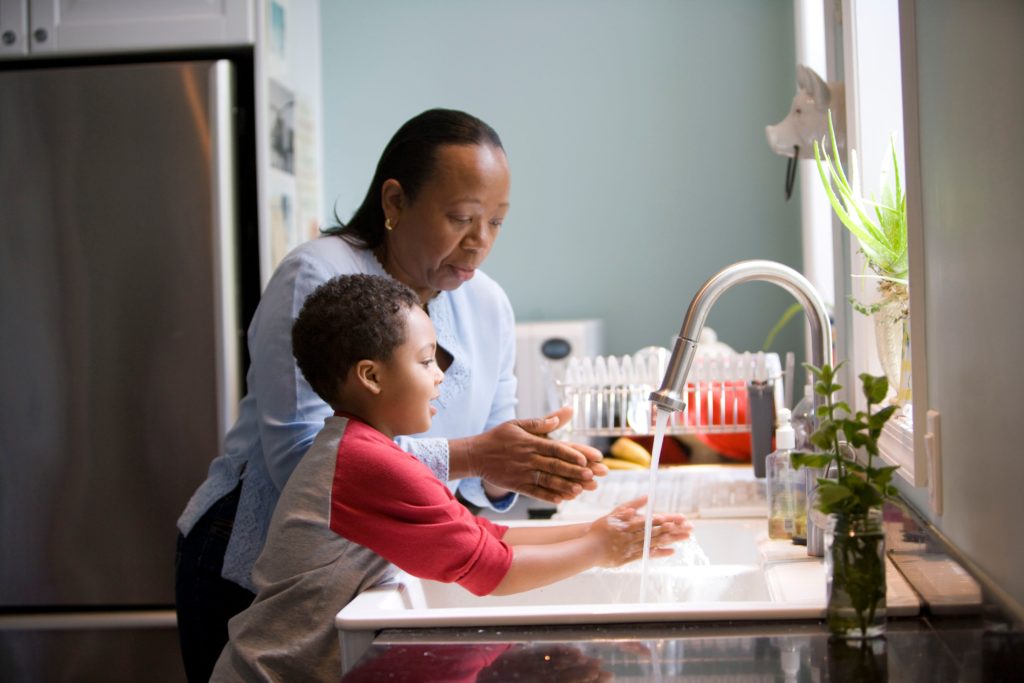The coronavirus has brought the topic of how discrimination drives the long-documented health care disparities facing Black people front and center in the national dialogue. There is no denying the facts, such as Black people are more likely than white people to die from cancer. They are at greater risk of developing cardiovascular disease and disorders such as sickle cell blood disorder. Blacks are more likely to suffer from depression, diabetes and chronic pain. Black children develop higher levels of stress and Black mothers are more likely to die in childbirth. So, what are the realities here in Marion County and what is the way forward?
 Can we all agree that for everything there is a season and a time for every purpose under heaven? If so, might we also agree that seasons and times are converging in unimaginable ways? We are living in a season of acknowledgement and action, simultaneously. As soon as a predicament presents itself there is an immediate call for change. Our microwave culture has cooked itself into a boiling moment and, basically, if you can’t stand the heat you might as well get out of the kitchen because things are shifting more swift than ever before.
Can we all agree that for everything there is a season and a time for every purpose under heaven? If so, might we also agree that seasons and times are converging in unimaginable ways? We are living in a season of acknowledgement and action, simultaneously. As soon as a predicament presents itself there is an immediate call for change. Our microwave culture has cooked itself into a boiling moment and, basically, if you can’t stand the heat you might as well get out of the kitchen because things are shifting more swift than ever before.
But this isn’t entirely new. Solvent civil rights activists have always demanded justice to be fair and swift in protecting human rights, and not left for a more palatable time by those least affected. Martin Luther King Jr. said it best in his 1963 “Letter from a Birmingham Jail” when he wrote, “Shallow understanding from people of good will is more frustrating than absolute misunderstanding from people of ill will. Lukewarm acceptance is much more bewildering than outright rejection.”
So as the corrections of social ills are playing out nationwide, it is vital that the health care industry lead the charge.
The U.S. Department of Health and Human Services Office of Minority Health’s (OMH) principal standard is to “provide effective, equitable, understandable and respectful quality care and services that are responsive to diverse cultural health beliefs and practices, preferred languages, health literacy and other communication needs” as an aim to improve health care quality and advance health equity to serve the nation’s increasingly diverse communities.
Therefore, in communities like Marion County, where the largest industry is health care and social assistance (20,449 people) it is essential that we analyze how our health care systems measure up to the standard of culturally competent care for African Americans (non-Hispanic) who account for 12.1 percent or 43,500 people, the second largest ethnic group in Marion County behind white people (70.1 percent) and represent the second most common ethnic group living below the poverty line (12,630 people or 18 percent), especially during a novel coronavirus (COVID-19) pandemic, which is most deadly to those with certain preexisting conditions.
As Dr. Emery Brown, an Ocala native, who is, among other accomplishments, a professor at the Massachusetts Institute of Technology and Harvard Medical School, states, “If you look at the risk factors for coronavirus and risk factors common to African Americans they are the same—diabetes, obesity and hypertension—many due to a genetic predisposition, especially diabetes and high blood pressure.”
However, Brown emphasizes, there are other reasons for the chronic illnesses that affect Black people disproportionately.
According to another Ocala native, one of the first five to integrate at Ocala High School in 1965, Dr. Ernest (E.K.) Johnson III, a “semi-retired” surgeon, front-line worker and medical director of several long-term care facilities in Nashville, Tennessee, “Disparity probably runs along socioeconomic lines. Blacks just haven’t had the access that other people have had and everybody is entitled to good health care in a prosperous country like America.”
When Congress asked the National Academy of Medicine (NAM) (formerly the Institute of Medicine) a private, nonprofit organization that provides health policy advice under a congressional charter granted to the National Academy of Sciences, to investigate racial and ethnic disparities in health care delivery, the NAM was instructed to determine how wide the health care gap was and identify potential reasons why it occurs. In its final report, Unequal Treatment: Confronting Racial and Ethnic Disparities in Healthcare, a panel of leading scientists and doctors concluded that minority patients are less likely than whites to receive the same quality of care, even when they have similar insurance or the ability to pay for care. To make matters worse, this health care gap is linked with higher death rates among minorities. Their research stated that even when they had the same type of insurance as their white counterparts, minority patients received a lower quality of care than non-minorities, that there were wide differences in access to health care and insurance between racial and ethnic groups than whites and that minorities are less likely than whites to have private health insurance. According to the report, even those minorities who have insurance are more likely than whites to be enrolled in health plans with tight limits on the types of services they may receive. And often, the best quality health care services and providers are not generally found in the communities where they live. These are just a few of the major reasons why minorities receive a lower quality of care and represent some of the major disparities.
In a statement issued in response to the report by The National Academies Press (NAP) on behalf of The National Academies of Science, Engineering, and Medicine, NAP reported that, “surveys show that, by and large, the general public is unaware that minorities receive a lower quality of care than whites. Many physicians, too, are unaware of the extent of racial and ethnic disparities in care.”
The Evolution of Racial Disparities
Access is a formidable barrier to quality care. Dr. Rosemary Oraedu, a local obstetrics and gynecology specialist, posits on the disparities in the country as a whole. Besides access to general medical care, “there are a lot of disparities, especially as it affects the African American community and the white community when it comes to wealth inequality, housing inequality, access to good education, access to good health insurance, and so those kinds of disparities lead to a preponderance of disease.”
She lists the disproportionate higher risk of chronic illnesses, aforementioned by Brown and Johnson, and adds that for every baby born,  “Black mothers are three to four times more likely to die from the complications related to childbirth than mothers who are white. It is a sad fact, but it’s true.”
“Black mothers are three to four times more likely to die from the complications related to childbirth than mothers who are white. It is a sad fact, but it’s true.”
Oraedu admits she has seen some things changing.
“I started seeing people coming through the doors who had not been to the doctor in seven to 10 years,” she offers, a fact she attributes to the Affordable Care Act (ACA), which allows her to see more Black patients. Yet, she adds, “the African American community is still lagging behind” and is still more likely to be uninsured and underinsured, a point echoed by Brown and Johnson.
“Health care is always a team effort,” she says. “Many people with serious illnesses require collaboration and referrals to a different specialist.”
Oraedu explains that this scenario has sometimes forced her against a “brick wall” when the insurance she accepts is not accepted by some of the subspecialists who need to collaborate in her patient’s care. As a result, some of her patients have travelled as far as the Mayo Clinic in Jacksonville to find a provider. This creates transportation and financial barriers for the patient. Challenges like these have made Oraedu a proponent of an expansion of the ACA to cover subspecialists.
Other barriers to access are psychological, Oraedu admits.
“Having quality insurance does elevate the patient’s psyche, confidence and likelihood to seek access to care,” she states.
Conversely, unseen stressors related to accessing care can adversely impact behaviors and mental health. U.S. Surgeon General Vice Admiral Jerome M. Adams, MD, MPH, says “the concept of allostasis refers to the idea that stressors that you’re facing in your day-to-day life ultimately are manifested in different ways that your body deals with that stress. And that can be anything from blood pressure changes to kidney changes to heart attacks to higher rates of cancer. And what we’ve seen medically also plays out, quite frankly, in people from a mental health point of view.”
Finding the right medical and mental help can be an exhaustive process, not to mention the stigma attached to mental health.
“By the time Black people come in for therapy after trying to handle it on their own, the symptoms are so much more severe,” according to the online community Black Mental Wellness.
Oraedu also says trial studies are needed to research the diseases most prevalent in the African American community, such as sickle cell anemia, lupus and uterine fibroids, which “cause a whole lot of morbidity for our African American women and yet a lot of these areas do not get a lot of funding in terms of research.”
Barriers to Care
Technology has also proven to be a barrier, especially in the midst of a pandemic. Enoelia Velasquez, a medical assistant at the Cardiovascular Institute of Central Florida, acknowledged a decline in people of color keeping their medical appointments during this time. Even with the availability of telehealth appointments, some patients simply didn’t have a smartphone or other device to access those services.
“When the outbreak first started, we saw a decline in patients overall,” Velasquez explains. “African Americans definitely were a large part of that group. I’d say about 45 to 50 percent.”
Fear as an Obstacle
There is much justified fear and mistrust within the Black community based on vast historical accounts of mistreatment within the medical community. If you’ve heard of the Tuskegee Study, “Mississippi appendectomies” and Henrietta Lacks’ HeLa cells, you might understand the strained relationship between Black people and the mainstream medical industry, replete with taking advantage of poor and uneducated Black people.
 Many times, this occurred without informed consent and sometimes for millions of dollars—dollars that never benefited the Black community. The legacy of trauma is passed down, contributing to allostasis and forcing many to seek physician assistance only in dire circumstances.
Many times, this occurred without informed consent and sometimes for millions of dollars—dollars that never benefited the Black community. The legacy of trauma is passed down, contributing to allostasis and forcing many to seek physician assistance only in dire circumstances.
Linda Lonon, a local Black resident, tenderly recalls, “So many ingrained emotions have been with us for so long. My dad didn’t like to go for checkups. As far as we knew, he was the picture of health—despite all the ‘indigestion’ he often had.” One day it was so bad she recalls that her father asked her to drive him to the doctor, only to find a “Gone Fishing” sign on the door.
“He didn’t want to go to the ER, so I took him home,” she notes. “But he didn’t stay there long.”
His wife told him she was taking him to the ER, but by the next morning he had died from a massive heart attack.
“It cost him his life,” she says. “His doctor said he probably had been having little heart attacks for some time because seldom does a person just have a massive one. Prevention, I believe, would’ve saved him.”
Education as a Key
“I don’t think there is anything magical,” opines Brown. “Basically, we need to take care of ourselves. Earlier wellness checks factor into the disparity. If you don’t go, you may not know your risk factors. Just having a doctor and dentist that you see regularly, once or twice a year for health maintenance, is a benefit. We need to improve our education system, which is the root for all things.”
Johnson agrees. “Solutions moving forward from COVID-19 have to start with education, in the home and in the family, and with eating habits. The good thing is, now we have so many qualified people. Blacks are really going to benefit from some of the leaders we have now who are taking to the forefront and correcting some of the things we never got a chance to correct.”
More Representation
Black health care professionals increase the trust factor for the Black community.
Lonon admits to being “so happy to see the increase in doctors, especially in a small town where you knew the few Black doctors…almost too well.”
Although the exact number is unclear and no local association of African American physicians exists, the diversity is evident. A lot of doctors have moved into the Ocala area.
“There are a lot of African (immigrant) physicians” in the area, Oraedu asserts. “The trust goes up when people are visiting with people who look like them. And then the understanding…because as a Black woman you understand what another Black woman might be going through.”
 Bridget Boynton, MSN, and one of the five founders of Ocala’s Black Nurses Rock (BNR), can attest. At an early age, Boynton knew she wanted to take care of people. After nearly 30 years of professional training, she is currently stationed at AdventHealth Ocala, where she works extensively in cardiology, seeing patients for chest pain, uncontrolled high blood pressure, congestion and cardiac arrhythmia. She says she “loves the specialty” partially because her parents are heart patients and it allows her to remain updated on new medications, technologies and treatments. Boynton says she has lost family members as young as 50 to strokes and heart attacks and stresses the importance of eating right, exercising and taking care of your high blood pressure.
Bridget Boynton, MSN, and one of the five founders of Ocala’s Black Nurses Rock (BNR), can attest. At an early age, Boynton knew she wanted to take care of people. After nearly 30 years of professional training, she is currently stationed at AdventHealth Ocala, where she works extensively in cardiology, seeing patients for chest pain, uncontrolled high blood pressure, congestion and cardiac arrhythmia. She says she “loves the specialty” partially because her parents are heart patients and it allows her to remain updated on new medications, technologies and treatments. Boynton says she has lost family members as young as 50 to strokes and heart attacks and stresses the importance of eating right, exercising and taking care of your high blood pressure.
“I see patients all the time with a new diagnosis of high blood pressure who probably had it for years and never took the time to check it or didn’t even realize they had ‘the silent killer,’” she explains.
BNR has a mission to assist determined nurses to grow professionally while addressing health care disparities through annual health fairs and by providing educational talks on cardiovascular disease, diabetes and HIV/AIDS.
Community Clinics
When Oraedu and her husband Dr. Christian Oraedu finished their residencies in New York the couple began looking for a medically underserved community in which to practice. In 2002, Ocala qualified as a health professional shortage area. While that doesn’t appear to be the case anymore, certain parts of Ocala are designated as food and medical desert areas—like Tucker Hill, where the northwest community is awaiting the open doors of the Estella Byrd Whitman Wellness & Community Resources Center. Formally approved as a clinic by the city of Ocala in February, founder Carolyn Adams, MSN, and Dr. Pamela Lewin are still fundraising to secure operating expenses and working diligently to open the facility in order to provide health care services to the community. In the meantime, Langley Health Services offers dental services by appointment at the venue.
Allies in the Struggle
Partnerships with community organizations help when making decisions that affect the health of those most vulnerable to disease.
Florida Blue, the state’s leading health insurer; and Florida Blue Foundation, the philanthropic arm of Florida Blue; announced $25 million in investments over five years to organizations focused on diversity and inclusion and health equity in the communities the organizations serve.
“We are at a turning point in the historical fight for equal justice, opportunity and better health care for Black people,” says Pat Geraghty, president and CEO of GuideWell and Florida Blue. “We cannot fulfill our mission of helping people and communities achieve better health without doing the urgent and necessary work to end systemic racism. We will make financial and operational investments to foster unity and an equal playing field and create a meaningful and lasting impact in the communities we serve.”
 Direct services like Elder Options, the state-designated North Central Florida area agency on aging, can also help reduce disparities.
Direct services like Elder Options, the state-designated North Central Florida area agency on aging, can also help reduce disparities.
Johnnie Jones III, caregiver support coordinator, says, “The Elder Helpline is where disparities can definitely be addressed, because most people don’t realize they have access until they call and are put in the triage to have services that they may not have known about.”
These critical services are plentiful: Tele-talk, animatronic pets, SHINE (Serving Health Insurance Needs of Elders), Savvy Caregiver training, monthly stipends to full-time caregivers, tai chi, Matter of Balance fall prevention classes, chronic disease self-management, Pearls—a depression management program, and other counseling. The 40-year-old agency also recently received a grant to donate and loan electronic tablets, complete with hotspots, to eligible families.
“People who need services the most tend to access them the least,” explains Jones, who likes to partner with houses of faith to get the word out.
But don’t let the name fool you; Elder Options is not exclusively for those 65 and older. They also assist younger clients with Medicare/Medicaid through SHINE, and caregivers as young as 45.
Common Sense and the Coronavirus
Heeding factual information from trusted advisors, who have your best interest at heart, while avoiding the pandemic of misinformation that initially trended on social media (i.e., rumors claiming people of color were immune to COVID-19) is essential.
To defend against the disease, Boynton advises African Americans to take vitamin D, C, and zinc to keep your immune system intact. She also encourages exercise and, of course, washing your hands and wearing a mask when going out in public.
Brown adds, “An issue like the coronavirus makes you realize how bad risk factors are. We all need to use this as a wake-up call. It doesn’t take a lot to exercise. It could be a few minutes a day and by the time a week has gone by, you have 120 minutes.”
Mental Health Counseling
As U.S. Surgeon General Adams said publicly, “It’s OK to not be OK. We need to give people ways to express their concern and their emotions and their pain. We need to give them the space to grieve and to vent. And we also have to try to balance that, though, with the need to protect property and to protect lives from violence and from COVID-19.”
Good mental health and understanding the mind-body connection makes us healthier overall. And while referrals to holistic programs are good coping mechanisms, Black people, especially, need to look at the origin of their mental stressors.
Implicit Bias and Racism
Among the most daunting factors that keep Black individuals from seeking care are implicit bias and racism.
Inherently, Black people have been taught to appear strong by their family members and community, but this has worked against them. According to the National Academy of Sciences and the American Association of Medical Colleges, some providers miss key components when it comes to diagnosing Black people’s pain. A survey conducted by NPR in collaboration with the Harvard T.H. Chan School of Public Health revealed that Black patients’ feelings are often minimized and not validated in a positive manner by the medical community, which has also been linked to the high maternal mortality rate among Black mothers. The argument has been made in many public forums and articles on the topic that bias in health care may even be more dangerous than many of the other threats currently facing the Black community in America.
 Internationally recognized researcher, senior vice president and dean of the University of South Florida Health Morsani College of Medicine (USF Health) Dr. Charles Lockwood described the issue of discrimination in the health care industry as a “pervasive public health problem” in a recent message to USF Health faculty, staff and students.
Internationally recognized researcher, senior vice president and dean of the University of South Florida Health Morsani College of Medicine (USF Health) Dr. Charles Lockwood described the issue of discrimination in the health care industry as a “pervasive public health problem” in a recent message to USF Health faculty, staff and students.
“Racial differences in health outcomes are well documented. While there are many proximate causes of these health disparities, they are all intertwined with this country’s shameful legacy of racism,” he noted. “Racial discrimination is reinforced through de facto segregation in our churches and neighborhoods, by inequities in education and the criminal justice system, and by chronic unemployment and underemployment. And, finally, it is manifest in adverse health outcomes accruing [because of] poor nutrition, the chronic stress attendant [to] these inequalities and limited access to high quality care. And when Black Americans finally access health care, they are often confronted by implicit bias and poor cross-cultural communication from providers.”
The Road Ahead
With regard to health care specifically, there will be no panacea for the problems plaguing Black Americans. The potential remedies are as varied as the socioeconomic issues, and from institutions to individuals, everyone has a part in the healing.
The NAP statement notes, “It may seem like an unbreakable cycle, but it is not a hopeless situation. The first step toward correcting the problem is to make people aware of it. Greater awareness is likely to lead to more public and professional concern to solve the problem.”
Ocala/Marion County can absolutely foster a greater awareness of the issues and find solutions to the disparities that have kept the Black community from the best possible health care opportunities.
Yes, we are living through a difficult season of change, but through adversity comes the possibility of true progress.
For more information, visit the U.S. Department of Health and Human Services Office of Minority Health at www.minorityhealth.hhs.gov or the National Institutes of Health’s Center on Minority Health Disparities at www.nimhd.nih.gov






